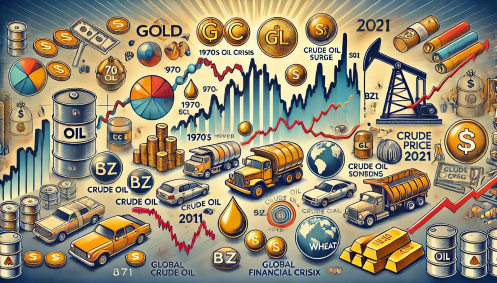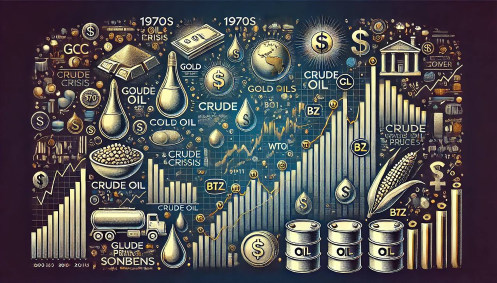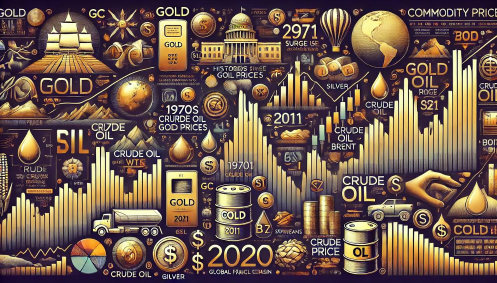
The historical prices of commodities like gold and oil have long served as economic indicators, reflecting shifts in market conditions, inflation, and investor sentiment. Both have had dramatic impacts on global economies and continue to be closely monitored by investors and policymakers.
Gold has been a valuable asset throughout human history, often seen as a store of value and a hedge against economic uncertainty. In recent decades, the price of gold has seen significant fluctuations. For example, during the 1970s, gold prices surged in response to high inflation caused by rising oil prices and geopolitical tensions. The price stabilized somewhat during the 1980s and 1990s but began climbing again in the 2000s, peaking in 2011 during the global financial crisis when investors sought safe-haven assets. Prices fluctuated following the crisis but have generally trended upwards, with notable spikes during times of increased economic uncertainty.

Oil prices have also been highly volatile, influenced by changes in supply and demand, geopolitical unrest, and changes in energy policies. The 1970s oil crisis caused prices to quadruple after an embargo by OPEC’s Arab nations, drastically affecting global economies. Prices dropped in the 1980s but rose significantly in the early 2000s, driven by increased demand, particularly from China. The most dramatic recent fluctuation occurred in 2020 when, amid the COVID-19 pandemic, demand plummeted, and at one point, prices even went negative due to storage capacity issues.
When trading commodities, each has specific symbols used on exchanges to standardize contracts and simplify trading. Here are some of the most well-known commodity trading symbols:
Gold: On the COMEX part of the New York Mercantile Exchange, gold is traded under the symbol GC.
Silver: Also traded on COMEX, silver uses the symbol SI.
Crude Oil (WTI): The West Texas Intermediate oil, a grade of crude oil used as a benchmark in oil pricing, is traded on the New York Mercantile Exchange under the symbol CL.
Crude Oil (Brent): Another major trading classification of crude oil, Brent Crude, is used as a major trading classification of sweet light crude oil and is traded under the symbol BZ on the ICE Exchange.
Corn: Traded on the Chicago Board of Trade, corn uses the symbol C.
Soybeans: Also on the Chicago Board of Trade, soybeans are listed under the symbol S.
Wheat: Another commodity traded on the Chicago Board of Trade, wheat uses the symbol W.

These symbols are essential for traders and investors as they provide a quick way to identify and trade various commodities in the financial markets. Understanding these symbols, along with historical price movements, helps traders make informed decisions based on patterns of volatility, trends, and potential future movements.